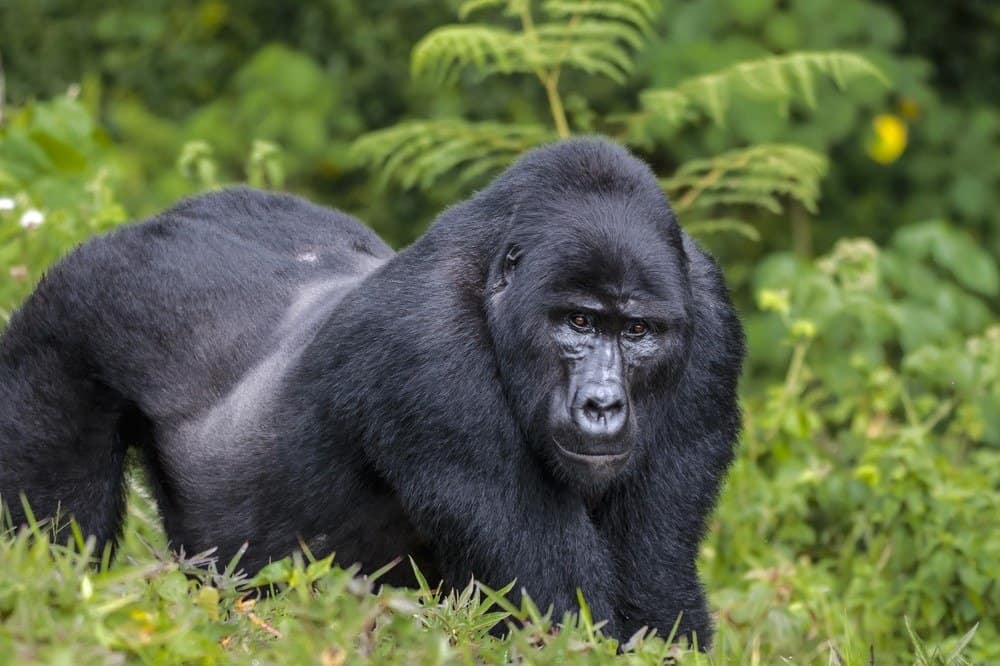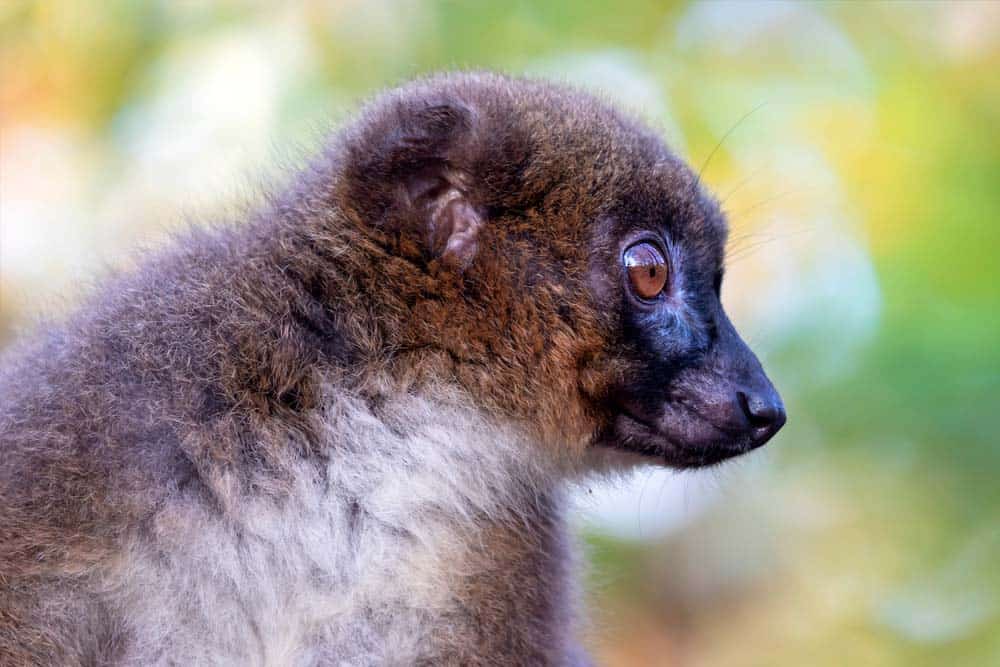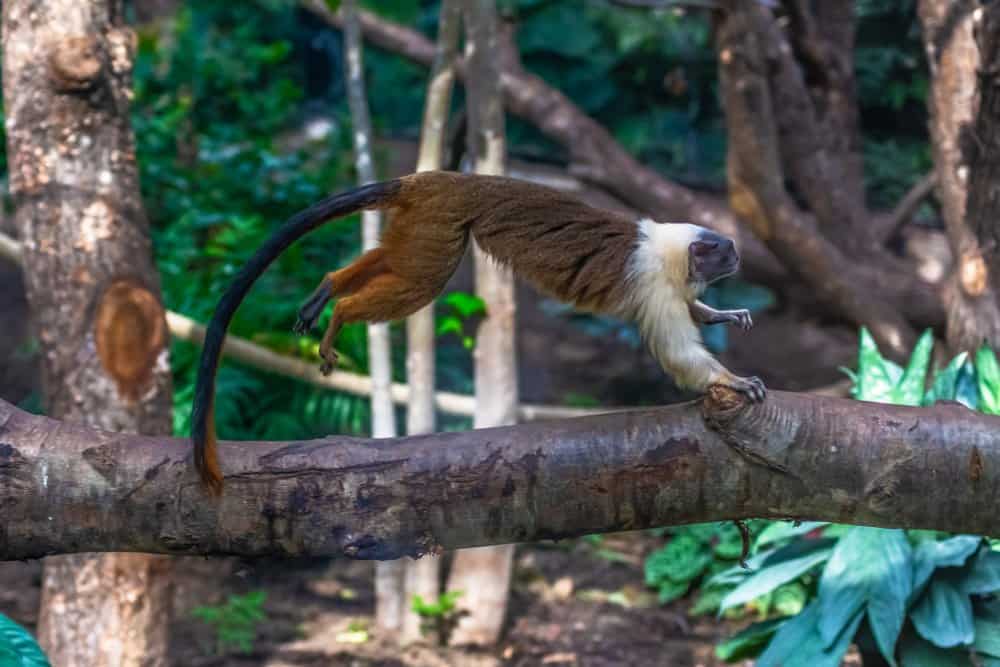As human beings, our cousins include monkeys, lemurs, and apes. And during the past 60 million years, all of us have descended from a single progenitor. Primates all share genetic traits since they are linked to one another from this single ancestor. Our own DNA is almost 96% the same as the DNA of our distant primate relative. Human DNA is a whopping 99% identical to our close primate cousins, the chimpanzees. To put it simply, primates are very closely related to one another.
But what exactly is a primate? What makes us part of the primate group, while we are so different from monkeys at the same time? In this in-depth guide, we’ll explore everything about primates, from their classification to types of primates and beyond.
What is a Primate?
Primates are an order of animals that belong to the Mammalia class. Bushbabies, lemurs, tarsiers, monkeys, lorises, and apes, which include humans, are examples of modern primates. Since their ancestors lived in the forest, primates have developed adaptations for a more arboreal or tree-dwelling lifestyle, such as bendable shoulders and dexterous hands.
The eastern gorilla weighs over 400 pounds and is the largest member of the order Primates. Madame Berthe’s mouse lemur is the smallest primate and weighs only a single ounce. Primate species number roughly 300, making them the third most varied group of mammals after rodents and bats.
Primatology is the field of study of primates. Primatologists are particularly interested in the topic of primates since humans are members of the order of primates. Many traits that distinguish humans from other primates have been studied in an attempt to comprehend how humans came to be on Earth in their current form.

The eastern gorilla (pictured) is the largest known primate in the world.
©Krasnova Ekaterina/Shutterstock.com
What Makes an Animal a Primate?
Primates are renowned for their high intellect and large brains compared to their physical size. They descended from ancestors who lived in trees and had several adaptations for a tree-dwelling arboreal lifestyle. Their large, opposable toes and thumbs make it easier for them to grab branches than other animals. Additionally, their hands and feet have unique nerve endings that make them more sensitive to touch.
Primates have flexible hip and shoulder joints that enable swinging and climbing through trees. Primates, as opposed to other mammals, have a clavicle or collar bone that is crucial for arboreal locomotion because it prevents the shoulder joint from collapsing when the ape swings along beneath a branch, placing one hand after another. Brachiation is a type of movement that only primates are capable of doing well due to the presence of a clavicle in each shoulder.
Primate Senses
The eyes of primates are forward-facing. This phenomenon, linked to stereoscopic vision, is often observed in predators of various species. The two fields of vision somewhat overlap while the eyes are facing forward, allowing the animal to evaluate depth and see three-dimensional objects. This is important for a predator who has to determine the precise distance of its moving prey.
Despite not being primarily predators, primates must assess the distance to the next limb or tree as they swing and leap through the jungle at rapid speeds. They can accomplish this accurately thanks to their stereoscopic eyesight. For detecting information about their surroundings, many animals rely more on their sense of smell than on their vision. In monkeys, superior eyesight has taken the role of the once-valuable sense of smell.
Well-developed eyesight is another adaptation to living in the trees, where aromas quickly vanish into the atmosphere. Primates utilize their eyes to find food, observe other animals’ behavior, and move through the jungle efficiently.
How Primates Evolved
Monkey fossils have been discovered on every continent, with the exception of Australia and Antarctica. The earliest known specimens were little long-tailed animals resembling marmosets. Their fossils, which date to around 55 million years ago, have been discovered in North America, Asia, and Europe.
These animals had various traits that are distinctive of contemporary monkeys even at this early stage. This, combined with current genomic research, has prompted experts to hypothesize that the primates and their mammal predecessors first separated up to 80 million years ago.
Unfortunately, there are still no fossils left from the very first species. About 35 to 55 million years ago, during the Eocene Epoch, primates underwent adaptive radiation. By the conclusion of this period, species that covered all the major primate groupings had emerged.
Fossils of Early Primates
Lemurs are one great example of primate evolution and migration. Only the island of Madagascar, which is located off the east coast of Africa, is home to lemurs. Lemur fossils, however, have been discovered in Pakistan and on the continent of Africa. Lemurs are thought to have arrived on Madagascar more recently, through rafts of floating vegetation, when the island separated from the mainland 88 million years ago. Lemurs on the island have evolved into over 100 different species during the last 20 to 30 million years.
There is no evidence of monkeys existing in South America in the current fossil records we have. It is believed that around 40 million years ago, the progenitors of current New World monkeys like spider monkeys and howler monkeys crossed the Atlantic from Africa on rafts of floating vegetation.
There is a lot of conjecture about primates’ beginnings, and it is obvious that additional fossil data is required to completely comprehend monkey evolution. Here’s hoping we get there eventually!

Evidence of the primate called the lemur (pictured) has been found in Pakistan and continental Africa despite only being found alive in Madagascar.
©Edwin Butter/Shutterstock.com
Are Humans Primates?
Yes, we are! Lemurs, monkeys, and apes may appear to be extremely different from humans, but humans and all primates share a few essential physical and behavioral traits. Primates are the only animals with which humans have the most DNA in common. According to genetic studies conducted in recent years, all surviving primates and people descended from a common ancestor that broke off from the rest of the animal family at least 65 million years ago.
However, scientists already understood that humans were in the ape order before DNA tests even existed. In his taxonomy from the 1700s, Carl Linnaeus grouped humans with monkeys, apes, and other primates. Even the ancient Greeks understood that humans and apes had many similarities. Anthropologists now acknowledge a number of anatomical and behavioral similarities between humans and monkeys.
Similarities Between Apes and Humans
There are many similarities between apes and humans. To start, it’s not just human children that spend countless hours playing and having fun. Chimpanzees also play for long periods of time. Play is any action that, both throughout childhood and adolescence, does not immediately or clearly provide any survival-based rewards.
Humans and primates are also both capable of smiling. Many primates have the ability to grin, laugh aloud, or have a full-on guffaw. This is a variety and flexibility in expressing joyful emotions that, until recently, was believed to be a characteristic of only humans. Everything points to the fact that facial emotions associated with laughing appeared in our monkey ancestors long before humans arose.
Just as well, primates and humans both possess the capacity to be conscious of their own thought processes. According to recent studies from a number of U.S. colleges, chimpanzees exhibit meta-cognition. Meta-cognition is the ability to think about one’s own ideas and mental processes. The authors of the studies contend that these primates are cognizant of what they know and do not know. This awareness allows them to respond with varying degrees of confidence and behavior, which allows them to make thoughtful judgments.
In this same vein, humans and primates are both moral beings. Humans are not the only creatures with a sense of right and wrong. When evaluating what conduct is unacceptable, chimpanzees can use discrimination, especially when it comes to young and newborn chimps. In one study, it was shown that chimpanzees respond with indignation and fury after witnessing sights of a baby being hurt by a member of their own species, in contrast to adult monkeys who do not exhibit these emotions when witnessing violence between adults. The research suggests that these primates share a moral sensibility with humans.
Types of Primates
The suborder Strepsirrhini contains lemurs, lorises, and bushbabies. The second suborder Haplorhini includes tarsiers, apes (and humans), and monkeys. They are the two main subgroups of primates.
Strepsirrhini Primates
Lemurs are endemic to Madagascar, but bushbabies are only found in Africa. Southeast Asia and India are home to lorises. These three ape species are thought to be more primitive because they resemble early insectivores. They are primarily nocturnal and rely on their keen sense of smell to communicate. They do this by emitting pheromone-containing odors. Southeast Asia is home to tarsiers, who are the only true carnivorous primates. Tarsiers also have a keen sense of smell.
Haplorhini Primates
There are two primary groupings for monkeys. While New World monkeys are located in South and Central America, Old World monkeys are found in Africa and Asia. While many monkey species are considered arboreal and spend little time in the treetops, others have adapted to a terrestrial lifestyle on the ground. Monkeys have relatively large brains and lengthy tails. They rely on their exceptional vision to understand their surroundings.
Apes, in contrast, lack tails. Apes are Old World species that are only present in Asia and Africa. These include gibbons, orangutans, gorillas, and chimpanzees. Because of their strong genetic ties to humans, apes are regarded as the most intellectual of the primates and are also the ones we are most familiar with.
Ecology of Primates
To better understand primate ecology, it helps to start by looking at what they eat. In tropical areas of the world, the majority of primates species live in trees. Some do, however, inhabit odd environments like high mountains and dry savannas. They forage in the tree canopies in search of leaves, fruits, flowers, and seeds for their diet. Primates that have evolved into terrestrial life, like baboons, are usually omnivorous and consume both insects and small vertebrates.
Some primates have more specialized diets. In fact, some marmosets and lemurs also eat tree gum, while tarsiers are predators that eat insects, reptiles, and bats. Gelada baboons eat largely grass. Primates can more readily adapt to living in various settings since they already consume a variety of plant foods.
How Primates Use Tools
It has been observed that certain monkeys use tools to assist them in getting food. Simple objects such as a stone used by a crab-eating macaque to crush a crab’s shell or a stem inserted into an ant’s nest by a chimpanzee to harvest a row of delectable ants are examples of these tools.
Even making tools on their own has been observed in certain monkeys. Apes can be trained to recognize items and interact with zoo caretakers in captivity. This demonstrates the higher level of intellect possessed by these mammals. And, naturally, human beings use tools to perform a wide range of tasks.
How Primates Move
Primates move in a variety of ways, often according to the ecosystems in which they reside. Lorises travel more slowly and hunt their food, but lemurs and bushbabies will opt to leap from tree to tree to get where they need to go. The true athletes of the jungle, monkeys and gibbons are capable of leaping or swinging from trees with ease.
Land-based monkeys like baboons use their four feet to move around and only climb trees at night to avoid predators. Many types of apes can brachiate to travel over the branches of trees, including gibbons, orangutans, and chimpanzees.
Most of the time, gorillas forage on the ground and move on four legs, supporting themselves on their front knuckles. Chimpanzees and gorillas often walk on two legs and are at ease standing up straight. And, of course, humans tend to walk around on their two feet.

Primates can move by climbing trees (pictured), swinging from trees, running of four feet, or walking on two feet.
©yggdrasill/Shutterstock.com
How Primates Socialize
Some primate species, like orangutans, live very solitary lives. They tend to graze alone and only interact with other individuals during their respective mating seasons. Instead of living in a group, gibbons will often develop pair bonds and live together with a mate rather than a community.
That being said, the majority of primates live in groups and exhibit sophisticated forms of social organization. In certain cases, the groups are made up of a single dominating female with a few males and her babies, as in the case of some species of certain tamarin monkeys. In other cases, groups are made up of a single dominant male with affiliated females, as in the case of gorillas.
Multiple males and females can be found in the social groups of monkeys like the chacma baboons and hamadryas, which can easily number in the hundreds. These cultures have intricate interpersonal interactions and a healthy mix of cooperation and competition.
Social groupings aid primates by providing safety from predators and making it easier to find romantic partners. On the other hand, there will always be rivalry among group members for the right to eat.
How Primates Communicate
Primates employ a range of vocalizations, which can include shouting, grunting, screeching, hooting, singing, and howling, as well as facial expressions to communicate among themselves and within groups. Just as well, they groom one another to strengthen their social ties and get rid of parasites. Even some lemurs and lorises have a unique row of front teeth called a toothcomb that they utilize to groom one another and themselves.
Primates are one of the most fascinating groups of animals on the planet. While we don’t fully understand who our direct ancestors are, primates share a lot of features and ecology with one another. We may not look like monkeys, but we really aren’t that different from them!
The photo featured at the top of this post is © exs_yori/Shutterstock.com
Thank you for reading! Have some feedback for us? Contact the AZ Animals editorial team.







